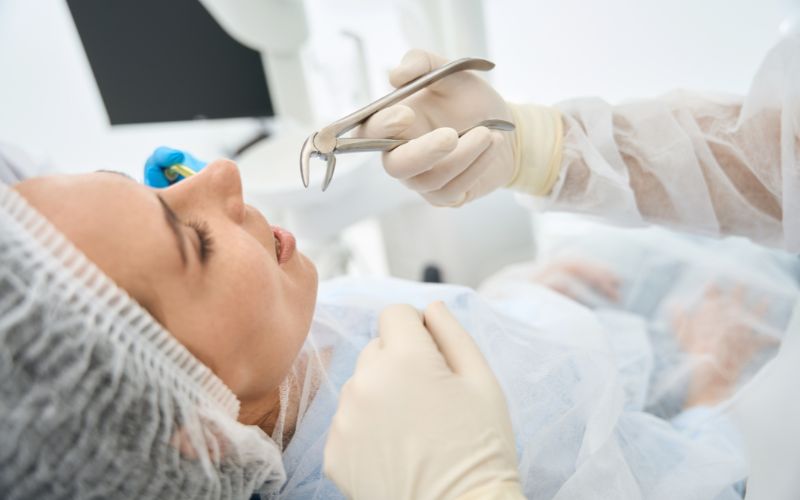1930 E. Rosemeade Pkwy #103 Carrollton, TX 75007
To Extract Or Not? When Removing A Tooth Is The Best Choice For Your Smile?


Feeling anxious about a tooth extraction? Don’t worry—it’s a quick and safe procedure! Here’s what happens – Should I pull or not? Many patients ask themselves this question when they have a tooth that is broken, infected, or otherwise troublesome.
Sometimes extraction is the best thing to do for your oral health, even though dentists usually try to preserve natural teeth. However, how can you decide when it’s required? Let’s break it down.
For What Reason Would You Require a Tooth Extraction?
The goal of tooth extraction is to preserve your long-term oral health, not only to remove teeth. The followings are some typical causes for pulling a tooth out:
- When a root canal is ineffective and a cavity obliterates the majority of the tooth.
- Extraction is required if infection makes the bone and tissue weak.
- Wisdom teeth that are affected can be painful, swollen, and misaligned.
- To make room for braces or alignment procedures, some teeth must be extracted.
- It might not be possible to save a tooth if the damage reaches the root.
Indications It’s Time For An Extraction
Are you unsure whether you really need a tooth extraction in Carrollton, TX or not? Keep an eye out for these warning signs:
- Constant discomfort that just doesn’t go away.
- Gums that are swollen, red, or bleeding.
- Gum disease related loose teeth, pus, or infection surrounding the tooth.
- Biting or chewing difficulties caused by a broken tooth.
Don’t put off seeing a dentist because ignoring these symptoms can result in more serious issues!
What Happens At The Tooth Extraction Treatment?
- Numbing the Area – Local anesthesia ensures you feel no pain.
- Loosening the Tooth – The dentist gently rocks the tooth to ease removal.
- Extraction – The tooth is pulled in seconds!
- Aftercare & Healing – Follow post-extraction care for a smooth recovery.
Over 20 million teeth are extracted annually in the U.S., with wisdom teeth being the most common reason, as per the American Public Health Association.
Pros & Cons of Tooth Extraction
Before making a decision, weigh the benefits and downsides of tooth removal.
Pros:
- Prevents infection spread.
- Relieves pain and discomfort.
- Improves oral health.
- Creates space for orthodontic treatment.
Cons:
- Possible bone loss if not replaced.
- Temporary discomfort after extraction.
- Need for a replacement option (implant, bridge, or denture).
What Happens After Tooth Removal?
Once a tooth is extracted, you have several options to restore your smile:
- Dental Implants – For a long-term solution, implants offer a permanent replacement that looks and feels just like a real tooth.
- Bridges – If you’re missing a single tooth or a few in a row, bridges are a great option for seamlessly replacing gaps between healthy teeth.
- Dentures – For those missing multiple teeth, dentures provide a versatile and cost-effective solution to restore both function and appearance.
The dentist will help you choose the best solution based on your needs.
If your tooth is beyond saving, extraction may be the best option for your oral health. However, consult our dentist first—sometimes, a root canal or other treatment can save your tooth. A healthy smile is about more than just keeping teeth—it’s about keeping the right ones!

